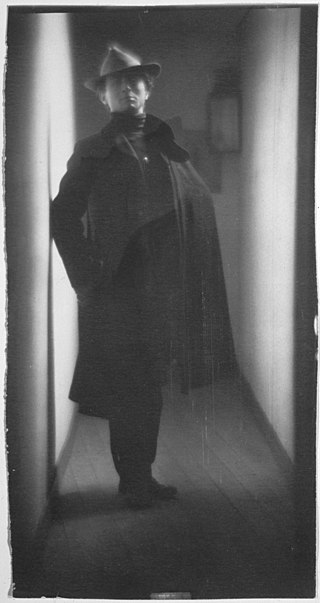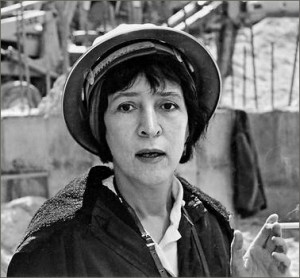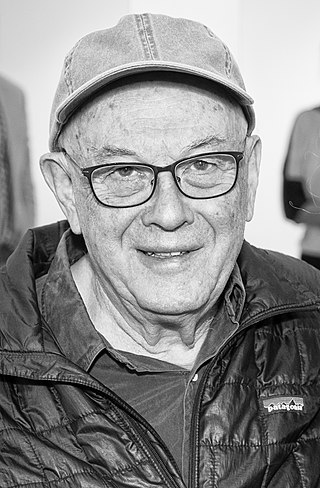
Walker Evans was an American photographer and photojournalist best known for his work for the Farm Security Administration (FSA) documenting the effects of the Great Depression. Much of Evans' work from the FSA period uses the large-format, 8×10-inch (200×250 mm) view camera. He said that his goal as a photographer was to make pictures that are "literate, authoritative, transcendent".

Edward Jean Steichen was a Luxembourgish American photographer, painter, and curator, renowned as one of the most prolific and influential figures in the history of photography.

Henri Cartier-Bresson was a French humanist photographer considered a master of candid photography, and an early user of 35mm film. He pioneered the genre of street photography, and viewed photography as capturing a decisive moment.

Street photography is photography conducted for art or enquiry that features unmediated chance encounters and random incidents within public places. Although there is a difference between street and candid photography, it is usually subtle with most street photography being candid in nature and some candid photography being classifiable as street photography. Street photography does not necessitate the presence of a street or even the urban environment. Though people usually feature directly, street photography might be absent of people and can be of an object or environment where the image projects a decidedly human character in facsimile or aesthetic.

Garry Winogrand was an American street photographer, known for his portrayal of U.S. life and its social issues, in the mid-20th century. Photography curator, historian, and critic John Szarkowski called Winogrand the central photographer of his generation.

Helen Levitt was an American photographer and cinematographer. She was particularly noted for her street photography around New York City. David Levi Strauss described her as "the most celebrated and least known photographer of her time."
Nicholas Nixon is an American photographer, known for his work in portraiture and documentary photography, and for using the 8×10 inch view camera.

Stephen Shore is an American photographer known for his images of banal scenes and objects, and for his pioneering use of color in art photography. His books include Uncommon Places (1982) and American Surfaces (1999), photographs that he took on cross-country road trips in the 1970s.

Henry Wessel was an American photographer and educator. He made "obdurately spare and often wry black-and-white pictures of vernacular scenes in the American West".

Bruce Landon Davidson is an American photographer. He has been a member of the Magnum Photos agency since 1958. His photographs, notably those taken in Harlem, New York City, have been widely exhibited and published. He is known for photographing communities usually hostile to outsiders.
Raghubir Singh (1942–1999) was an Indian photographer, most known for his landscapes and documentary-style photographs of the people of India. He was a self-taught photographer who worked in India and lived in Paris, London and New York. During his career he worked with National Geographic Magazine, The New York Times, The New Yorker and Time. In the early 1970s, he was one of the first photographers to reinvent the use of color at a time when color photography was still a marginal art form.
Louis Stettner was an American photographer of the 20th century whose work included streetscapes, portraits and architectural images of New York and Paris. His work has been highly regarded because of its humanity and capturing the life and reality of the people and streets. Starting in 1947, Stettner photographed the changes in the people, culture, and architecture of both cities. He continued to photograph New York and Paris up until his death.
Kohei Yoshiyuki was a Japanese photographer whose work included "Kōen", photographs of people at night in sexual activities in parks in Tokyo. Prints from The Park are held in the collections of the Museum of Modern Art and Metropolitan Museum of Art, New York; San Francisco Museum of Modern Art (SFMOMA); Museum of Contemporary Photography, Chicago; and Museum of Fine Arts, Houston. Examples from the series were included in the exhibition Exposed: Voyeurism, Surveillance and the Camera at Tate Modern, SFMOMA and the Walker Art Center.

David Alan Harvey is an American photographer, based in The Outer Banks, North Carolina and New York City. He was a full member of the Magnum Photos agency from 1997 to 2020 and has photographed extensively for National Geographic magazine. In 1978 Harvey was named Magazine Photographer of the Year by the National Press Photographers Association. He is the founder and curator of Burn, a website showing the work of emerging photographers.
Angela Cappetta is an American photographer. Her work includes diaristic self-portraits.
G. Winston James is an American poet, essayist, editor, and activist. His poetry collections include Lyric: Poems Along a Broken Road and The Damaged Good.
Edson Chagas is an Angolan photographer. Trained as a photojournalist, his works explore cities and consumerism. In his "Found Not Taken" series, the artist resituates abandoned objects elsewhere within cities. Another series uses African masks as a trope for understanding consumerism in Luanda, his home city. Chagas represented Angola at the 2013 Venice Biennale, for which he won its Golden Lion for best national pavilion. He has also exhibited at the Museum of Modern Art and Brooklyn Museum.
Thomas O’Conor Sloane, Jr. (1879–1963) was an American photographer.
Grace M. Mayer was a curator of photography for the Museum of the City of New York and for the Museum of Modern Art.
Peter Kayafas is an American photographer, publisher, and educator based in New York City. He creates black and white photographs that are "simple and spare, yet quietly overpowering with their evocation of a history on a scale beyond that of individual human lives."









